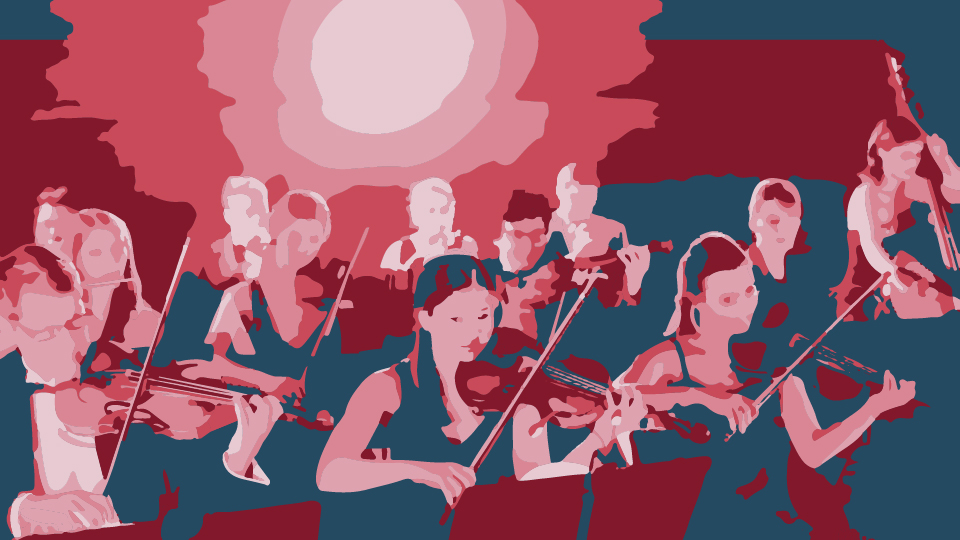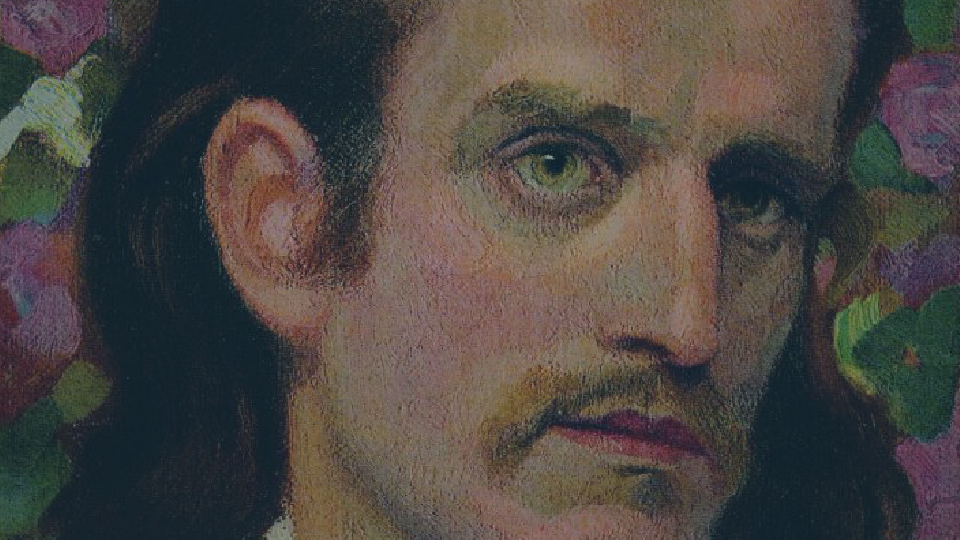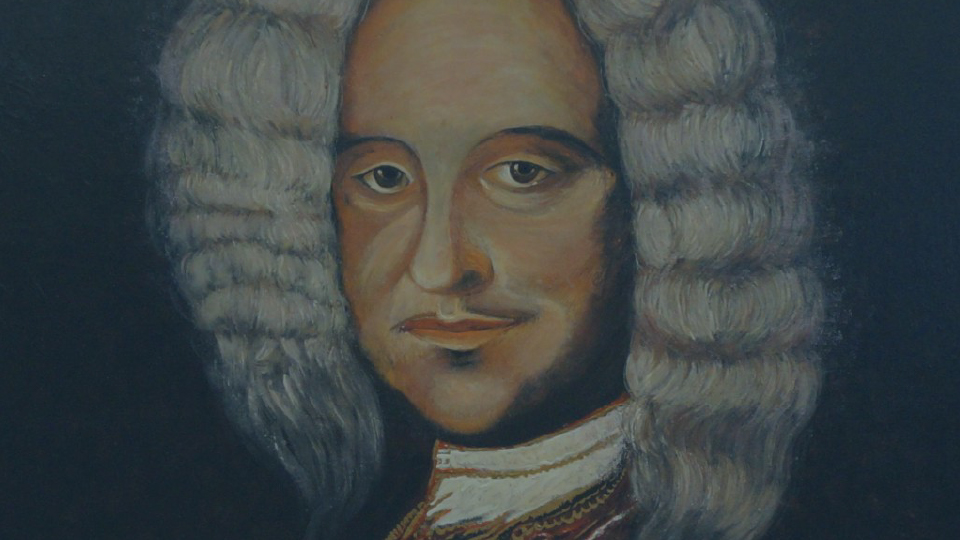

Slovenia - Austria
HISTORICAL & MUSICAL INTERRELATIONS
Slovenia, like Austria, can look back on a centuries old musical tradition. The Slovenian composers of the 20th century enjoyed increasing recognition abroad, especially after the end of the Second World War. Their contribution to European musical culture happened in two different ways. Some composers emigrated abroad for educational and working purposes, others took part in the development of Western European music and integrated its innovations into their compositional work.[1]
The following report will present an excerpt of the interrelations between Austria and Slovenia based on selected representatives of both countries and their significance for the musical landscape of their countries of origin.



The earliest traces of the musical emigration mentioned above date back to the mid-15th century. Jurij Slatkonja (1456- 1522), born in Ljubljana, was a Viennese bishop and bandmaster of the Chapel of Emperor Maximilian I. It is assumed that monophonic songs can also be traced back to him. As conductor and artistic director he helped the orchestra to become known within Central Europe and thus contributed to the cultivation of Central European musical culture.[2]
The next representative is the Renaissance composer Jacobus Gallus, whose works are related to the compositions of the Venetian school. Little is known to us about the youth of Jacobus Gallus (* July 3, 1550 in Reifniz/Unterkrain, + July 18, 1591 in Prague) and especially about his musical career. After leaving his home country, he stayed in the Lower Austrian Monastery of Melk, where he cooperated for several years with the singing master L. de Sayve. There he wrote the 4th Mass Book, which he dedicated to Johannes Rueff, the Abbot of Zwettel. Johannes Rueff not only asked him to compose this book, but also initiated the creation of his lucubratiuncularum.[4] He then became a member of the Hofkapelle (1574/75) in Vienna.[5]
A contemporary of Gallus and further representative of a music-related emigration was Matej from Celje, one of the most important bassists of his time and singer of the Vienna Hofkapelle in the years 1567-1580. Other composers whose works bore fruit in Austria were Daniel Lagkhner, who was organist for Baron Losenstein in Lower Austria, Krstnik Dolar, who directed the musical activities in the Jesuit Church at the court in Vienna, and Jurij Prenner, the first composer with the epithet Carniolus, who worked in Prague and Vienna at the beginning of the 16th century.[5]



In the course of a national movement aimed at the emancipation of Slovenian music, music production was promoted and several choral societies were founded, the Dramatic Society (1867) and the Glasbena Matica (1872) in Ljubljana. The composer Benjamin Ipavec came from this period.[6] Benjamin Ipavec (*24 Dec. 1829 in Sentjur near Celje, Slovenia), who was gifted both scientifically and musically, first studied medicine in Graz in the 1850s and simultaneously counterpoint and orchestration with Wilhelm Mayer (W.A Rémy). Also in Graz, he conducted the choir of the Slovenia Society before he went to Vienna and remained there until 1858. After working as an assistant physician at the Provincial hHspital in Graz (1858-1865), he then ran his own practice (1865-1871) and finally worked as chief physician at the Children’s Clinic “St. Anna” (1871-1898). He died on 20 Dec. 1909 in Graz. [7]
Ipavec was one of the most important Slovenian romantic composers at the end of the 19th century. The development of the Lied reached its peak under him. While the early songs were set to German texts, Ivapec used only Slovenian texts for his later works. His lyrical opera Teharski is considered the first Slovenian historical opera. [8]



The composer and conductor Emil Nikolaus (Joseph) Reznicek (*4 May 1860 in Vienna, +2 August 1945 in Berlin) spent most of his childhood in Vienna before moving to Graz in 1874 and receiving his first music lessons. From 1876-1878 he attended the Gymnasium in Marburg, where he graduated in 1878. One year earlier he composed his piece Chorus for the graduation ceremony of the Gymnasium in Marburg an der Drau for mixed choir and orchestra.[9] Parallel to his law studies in Graz, he had also been a student of Wilhelm Mayer since 1878. After his piano studies in Leipzig, he moved again to Graz, where he worked as a répétiteur.[10]



The Viennese Classicism also left its mark in Slovenia. In 1794 the Ljubljana Philharmonic Society was founded. The appointment of important composers as honorary members promoted the cultural exchange between the two countries. Mozart, who could not attend his appointment, was represented by his son when he stayed in Ljubljana in 1820. Besides Mozart, this honor was also bestowed on Haydn (1800), Beethoven (1819) Paganini (1824) and later assigned to Brahms. In 1836 the Austrian composer and music critic Anselm Hüttenbrenner was also included in their membership.
In connection with the history and development of local musical institutions, the artistic director Wilhelm Kienzl (*17 January 1857 in Waizenkirchen, + 03 October 1941 in Vienna) should not be forgotten. The later Mayor of Graz, Wilhelm Kienzl, was very concerned about the musical education of his son.
Kienzl supplemented his composition classes with Wilhelm Mayer-Rémy at the Musikverein with lectures on music history by Friedrich von Hausegger at the University of Graz. From 1886 to 1890 he held the position of Director of the Musikverein for Styria in Graz. With the opening of the first piano class (1888), he laid the foundation for the main subject piano lessons. Like Anselm Hüttenbrenner, he was a member of the Ljubljana Philharmonic Society. [11]



The composer and music critic Hugo Wolf (*13 March 1860 in Windischgraz, today Slovenia, + 22 February 1903 in Vienna) comes from a family whose ancestors came from the neighboring border areas of Slovenian, Italian and German-Austrian settlement areas (Southern Styria, Kanaltal, Eastern Carinthia). As a member of a German-Austrian minority, the German-national-anticlerical attitude of the father shaped him. After completing elementary school in Windischgraz, he received violin lessons from Ferdinand Caspar and piano lessons from Johann Buwa in the Styrian Music Society. His plan to attend the grammar school in Graz failed after only one semester due to his insufficient performance.[12] As an important representative of late romanticism, Wolf is considered one of the most important composers after F. Schubert.
One of the outstanding musical personalities of the 20th century is undoubtedly Lucijan Marija Škerjanc (*17 Dec. 1900 in Graz, + 27 Feb. 1973 in Ljubljana). The Slovenian composer, conductor, music pedagogue and music critic studied not only in his birthplace, but also at the Prague Conservatory and at the Vienna State Academy of Music and Performing Arts (composition with Joseph Marx and piano with Anton Trost). From the 1920s to the 1970s, his productivity and a respectable circle of students enabled him to achieve great influence. His more traditionally oriented work combines late romantic influences with impressionistic elements. [14]
The Austrian composer Walter Kainz (*1907 in Dobl near Graz, + 1994 in Söding) made a name for himself as director and (music) teacher of various institutions in the educational sector. The cultivation of regional music and folk culture was a personal concern of his. In 1936 he published his collection of legends, fairy tales and tales under the title “Volksdichtung im Kainachtal”. From 1941 to 1944 Walter Kainz worked as a secondary school teacher in Schönstein (today Sostanj in Slovenia). There he founded a music school and was its director.[15] His achievements were twice awarded the Joseph Marx Prize. In 1979 he received the “Golden Decoration of Honor of the Province of Styria”.

[1] Cf. Andrej Rijavec, Slovene composers of the 20th century, Ljubljana – Cologne 1975, p. 2.
[2] Ivan KlemenČiČ, Slovenian music between the European and the original, p. 273.
[3] Cf. Andrej Rijavec, Slovenian composers of the 20th century, Ljubljana – Cologne 1975, p. 6
[4] Cf. MGG, Jacobus Gallus, column 474.
[5] Cf. Austria Forum, as of 25 March 2016.
[6] Cf. Andrej Rijavec, Slovenian composers of the 20th century, Ljubljana – Cologne p. 10.
[7] Cf. MGG, Benjamin Ipavec, column 658.
[8] Ebda. 659.
[9] Cf. Jeanette Gonsior, Emil Nikolaus (Joseph) Reznicek, Academy of Arts.
[10] Cf. MGG, Emil Nikolaus (Joseph) Reznicek, column 1609.
[11] Cf. Mona Silli, Chronicle of the Johann-Joseph-Fux Conservatory, Diss, Kunstuniversität in Graz 2009, p. 45ff.
[12] Cf. MGG, Hugo Wolf, column 1075.
[13] Cf. MGG, Lucijan Marija Škerjanc, column 878.
[14] Cf. Andrej Rijavec, Slovenian composers of the 20th century, Ljubljana – Cologne 1975, p. 14. [15] Cf. Heinz Zechner, Walter Kainz (1907 – 1994), p. 3.
